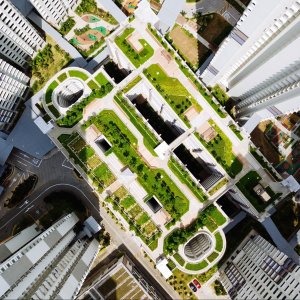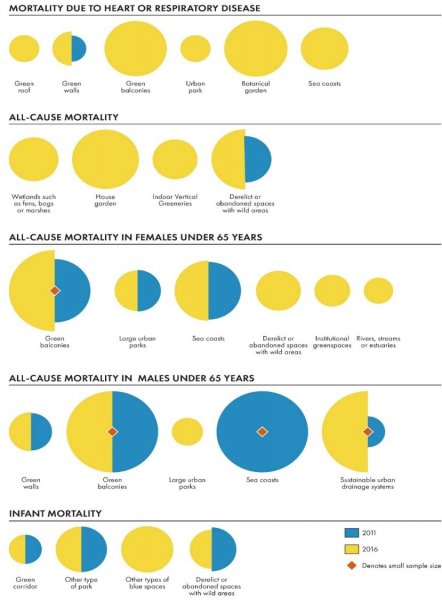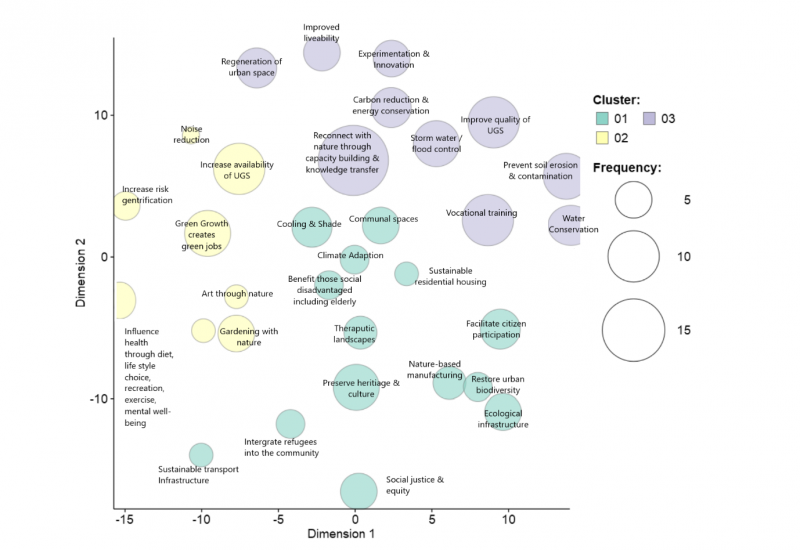
In cities, the built and natural environment are important determinants of health, particularly among groups that are disadvantaged by relative poverty, unemployment, low status, gender, ethnicity and disability (WHO, 2012). Evidence of the impact of green and blue space provided by Nature-based Solutions (also referred to as NbS) play an important role influencing physical health outcomes such overall general health, obesity, birth weight, child behavioural development, but also the prevalence of mental health conditions across society (see Lovell et al., 2018; Dzhambov, et al. 2018; Dempsey et al, 2018; Vaeztavakoli, et al., 2019). Research suggests contact with nature may support a reduction in the prevalence of cardiovascular, musculoskeletal, respiratory and other diseases, especially among groups with greater access to greenspace and low socio-economic status (James et al., 2014; Sandifer et al., 2015).
While there are many studies that examine the relationship between different types of green and blue space and health, no study has compared the relationship and size of the effect between different types of NbS and health outcomes. To fill this gap, researchers at the NATURVATION project, a four-year project funded under the EU Horizon 2020 Programme, conducted a study to examine the relationship between different types of green or blue space based on the terminology Almassy et al. 2017. These include green space that is connected to the external fabric of buildings such as green roofs and green walls; urban green space that is connected to grey infrastructure such as street trees or greenified alleys; urban parks such as neighbourhood greens, urban forests or pocket parks; greenspaces used for food production such as allotments or community gardens; indoor green spaces; blue spaces such as sea coasts and wetlands; green areas for water management including swales, raingardens and sustainable urban drainage systems, and lastly, derelict areas or vacant plots of land with patches of wilderness.
Using inferential statistics and size effect analysis, the study examined the relationship between different types of ecological domains and ecosystems services provided by NbS and health outcomes using data published by the Urban Nature Atlas (Naturvation, 2017) and mortality indicators for cities published by the Urban Audit (Eurostat, 2017). After adjusting for confounding due to material deprivation, figure 1 shows some types of external green buildings such as green roofs and green walls, large urban parks and botanical gardens, seacoasts and green balconies are significantly associated with mortality due to respiratory or heart disease. These findings are consistent with research that suggests NbS such as green walls play an important role in the removal of high concentrations of pollutants.

Figure 1 Association and size effect between ecological domains and a) mortality due to heart or respiratory disease and b) all-cause mortality (* denotes small sample size).
All-cause mortality and blue spaces such as wetlands or fens, NbS connected to residential properties and derelict land or vacant plots with wild areas, were also moderately to strongly related to all-cause mortality, but when the study examined the relationship between gender and mortality we found different results. In women and men under 65 years of age, all-cause mortality was strongly significantly related to types of external green buildings such as green balconies, large urban parks and seacoasts, but the size of the effect was much weaker in men than women and their where differences too. For example, sustainable urban drainage schemes were significantly related to mortality in men but not women.

Figure 2: Pathways linking NbS and health
Further research needs to be undertaken to establish if there is a causal relationship between different types of NbS and mortality, but analysis of qualitative commentaries that accompany indicators published in the Urban Nature Atlas suggest NbS aim to influence health and well-being by reconnecting citizens with urban nature, improving liveability and establishing therapeutic landscapes in cities, but also aim to provide services that will increase the availability of environmental resources to aid climate adaption, improve access to greenspace, provide areas of shade and communal spaces to help facilitate social cohesion, but also regenerate urban space and stimulate green growth.
- Clair Cooper
PhD Student Durham University - NATURVATION Project
References:
Almassy, D, Pinter, D, & Rocha, S.M, (2017), “Work Programme 2. Nature-Based Solutions Data Collection Manual”, HORIZON 2020 // The EU Framework Programme for Research and Innovation April 2017, accessed: www.naturvation.eu.
Almassy, D, Pinter, L, Rocha, S, Naumann, S, Davis, M, Abhold, K, & Bulkeley, H, (2017), “Urban nature based solutions: A database of cases across 100 European cities - Deliverable 2.2”, accessed: www.naturvation.eu.
Dempsey, S, Lyons, S, Nolan, A, (2018), “Urban green space and obesity in older adults: Evidence from Ireland”, SSM - Population Health, 4, pp.206-215.
Dzhambov, A.M, Markevych, I, Hartig, T, Tilov, B, Arabadzhiev, Z, Stoyanov, D, Gatseva, P, Dimitrova, D.D, (2018), “Multiple pathways link urban green- and bluespace to mental health in young adults”, Environmental Research, 166, pp.223-233.
Lovell, R, & Maxwell, S, (2018), “Health and the natural environment: A review of evidence, policy, practice, and opportunities for the future”, DEFRA
Sandifer, P.A., A.E. Sutton-Grier, & B.P. Ward, (2015). “Exploring connections among nature, biodiversity, ecosystem services, and human health and well-being: Opportunities to enhance health and biodiversity conservation”. Ecosystem Services, 12(0): p. 1-15.
Vaeztavakoli, A, Azadeh, L, & Tan, Y, (2018), "Blue and Green Spaces as Therapeutic Landscapes: Health Effects of Urban Water Canal Areas of Isfahan" Sustainability 10, 11: 4010.
WHO, (2012) Environmental health inequalities in Europe. Assessment report.

